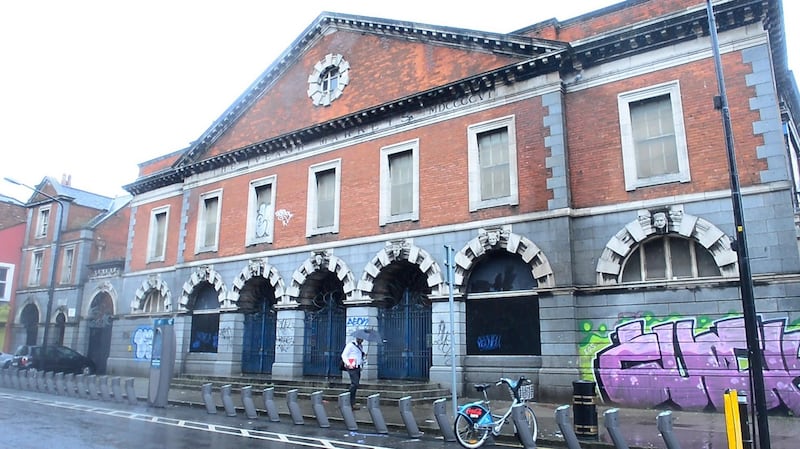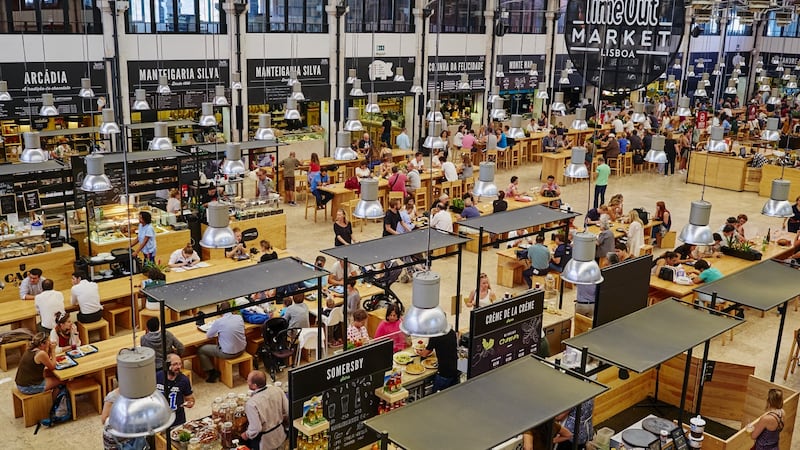Now that the vaults of CHQ in Dublin's Docklands have been filled with the multimedia exhibition Epic Ireland, which opens to the public today, what's to be done with the extensive ground floor of this listed early 19th century warehouse building to replace a shopping mall that never worked?
Previously known as Stack A when Dublin Port had it, CHQ was to have been a contemporary art museum under the original masterplan for redeveloping the Custom House Docks, adopted in 1986.
But within a year Charlie Haughey had decreed that the museum – Imma – would be located in the Royal Hospital, Kilmainham.


Restoration of the CHQ building, with its wrought-iron roof trusses and brick-vaulted basement, cost €45 million. But the Dublin Docklands Development Authority decided that it should be a shopping mall – even though a similar venture at Tobacco Dock in London had failed years earlier. Apart from Ely Bar and Brasserie, which opens outwards onto George's Dock, CHQ was a spectacular flop.
The value of the DDDA's investment was virtually written off in July 2013 when CHQ was bought by former Coca Cola chief Neville Isdell for only €10 million. Plans were eventually hatched to turn the vaults into a "destination attraction", anchored by the Epic Ireland diaspora extravaganza.
But apart from a “food and beverage hot spot”, plans for the ground floor have yet to be fully formulated.
One of the best options would be to create a buzzing epicurean food court along the lines of Mercado da Ribeira in Lisbon, a successful venture by Time Out, the publisher of travel guides. Alternatively, it could be located in the Victorian Fruit and Vegetable Market on St Mary's Lane near the Four Courts, or in the Iveagh Markets, on Francis Street in the Liberties.
Mervyn Greene, managing director of CHQ Dublin, says a food court is “one of the possibilities” being considered for its ground floor.
"Conceptually, we think it's a great idea and the real issue is whether it fits strategically and commercially [with Epic Ireland]. But if it can work in Lisbon, which we've heard about, it can work in Dublin."
CHQ already hosts a farmers’ market every Friday as well as a Christmas food market. In 2014, planning permission was granted for an “experiential food market” in place of a quarter of the retail units on the ground floor – in other words, an ample space where people could sit down to eat and drink, as opposed to simply buying produce.
Busy food market in Lisbon
“We have some models – the English Market in Cork, obviously, and also Eataly, a chain of restaurants that grew out of the slow food movement in Italy. But we need to get an understanding of the footfall dynamic generated by
Epic Ireland
before making final decisions. In the meantime, let’s just say a trip to Lisbon is on the agenda.”
Whatever about the new diaspora museum, merely introducing a few more food outlets seems like a missed opportunity to make the most of CHQ by following the fantastic example of Lisbon’s Mercado da Ribeira, which is thronged night and day by local people and tourists enjoying the best food and drink at extraordinarily reasonable prices.
When Time Out learned in 2010 that Lisbon city council was seeking tenders for a contract to manage a large part of the historic building as a food court, it seized the opportunity to transform this vast market hall into a “foodie hangout”, lined with some of the city’s favourite food shops and restaurant kitchens manned by its best chefs.
Renamed the Time Out Mercado da Ribeira when it opened in May 2014, it has become one of the busiest places in Lisbon. With long canteen-style tables and benches, the food court can seat hundreds of people at a time, and opens every day at 10am, running until midnight during the week and 2am at weekends.
Outlets include Café de São Bento, which is famous for its sirloin steaks and croquettes; Monte Mar and Sea Me, serving the best of Portuguese seafood; Asian Lab and Fusion Sushi, which dish out delicious dumplings and Japanese sushi, while the outlet of chef Henrique Sá Pessoa specialises in gourmet hamburgers.
Altogether, Mercado da Ribeira contains 34 food and drink outlets, including a café churning out legendary pasteles (custard tarts), a cookery school where people can make their own meals, with help from chefs, an outlet where you can sample ginja, the Portuguese wild cherry liqueur, as well as trying cured ham at Manteigaria Silva, a long-established charcuterie.
The possibilities are endless at Mercado da Ribeira. Although it is somewhat larger than the ground floor of CHQ, there would be enough space there for, say, at least 20 high-class food outlets.
The Fruit and Vegetable Market on St Mary’s Lane could accommodate even more, depending on how much of the currently wholesale-only building was given over to retail.
Continental style
In March 2015, Dublin city councillors approved a €3 million development plan for the Victorian market building, under which its eastern half would be turned into a continental-style food market, similar to the Mercat de la Boqueria in Barcelona. But resistance by wholesalers to details of the plan has delayed its implementation.
Work has yet to get under way on an even longer delayed development plan for the Iveagh Markets in the Liberties.
Owned by publican Martin Keane, it is meant to house a food market, restaurants, a craft brewery and distillery, a craft and clothing market and exhibition and performance area.











